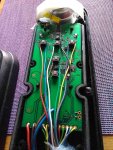Blueboatman
Well-Known Member
I’ve read a fair few books , as you need to in order to have much chance of building something that actually works .
Foerthmann is good
And my fav is still Dijkstra’s Self steering for sailboats
Self-steering for sailboats: Amazon.co.uk: Dijkstra, Gerard: 9780914814177: Books
Partly because the units he describes are still those readily available !
Foerthmann is good
And my fav is still Dijkstra’s Self steering for sailboats
Self-steering for sailboats: Amazon.co.uk: Dijkstra, Gerard: 9780914814177: Books
Partly because the units he describes are still those readily available !

